Best Winter Cabbage Varieties to Plant in July UK: Expert Guide for Continuous Harvest
Planning for winter vegetables starts in July! Discover the hardiest winter cabbage varieties perfect for UK gardens, from frost-resistant Savoy types to reliable January King varieties. Learn expert planting techniques, care tips, and timing advice for a bountiful winter harvest that will keep your kitchen stocked with fresh, nutritious greens throughout the coldest months.
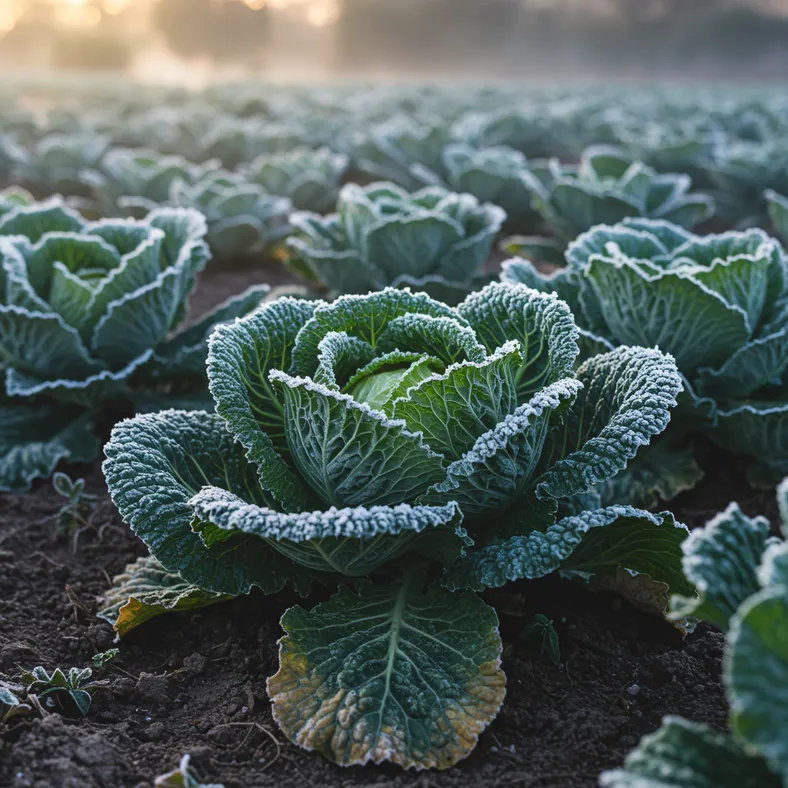
- Understanding Winter Cabbage Varieties
- Top Winter Cabbage Varieties for UK Gardens
- Perfect Timing: July Sowing for Winter Harvest
- Soil Preparation and Planting Techniques
- Transplanting and Spacing Guidelines
- Essential Care Through Autumn and Winter
- Harvesting Your Winter Bounty
- Common Challenges and Solutions
- Planning Your Winter Vegetable Garden
When July arrives in the UK, most gardeners are focused on tending summer crops and enjoying the abundance of warm-weather vegetables. However, savvy gardeners know that July is actually the perfect time to plant winter cabbage varieties that will provide fresh, nutritious harvests throughout the coldest months of the year.
Winter cabbages are remarkably hardy vegetables that can withstand frost, snow, and freezing temperatures that would destroy other crops. By planting the right varieties in July, you'll ensure a continuous supply of fresh greens from November through March, when little else is growing in the garden.
From the frost-resistant crinkled leaves of Savoy varieties to the reliable purple-tinged January King types, winter cabbages offer both exceptional hardiness and outstanding flavour. These varieties have been specifically bred to thrive in UK conditions, making them essential additions to any productive winter garden.
Understanding Winter Cabbage Varieties
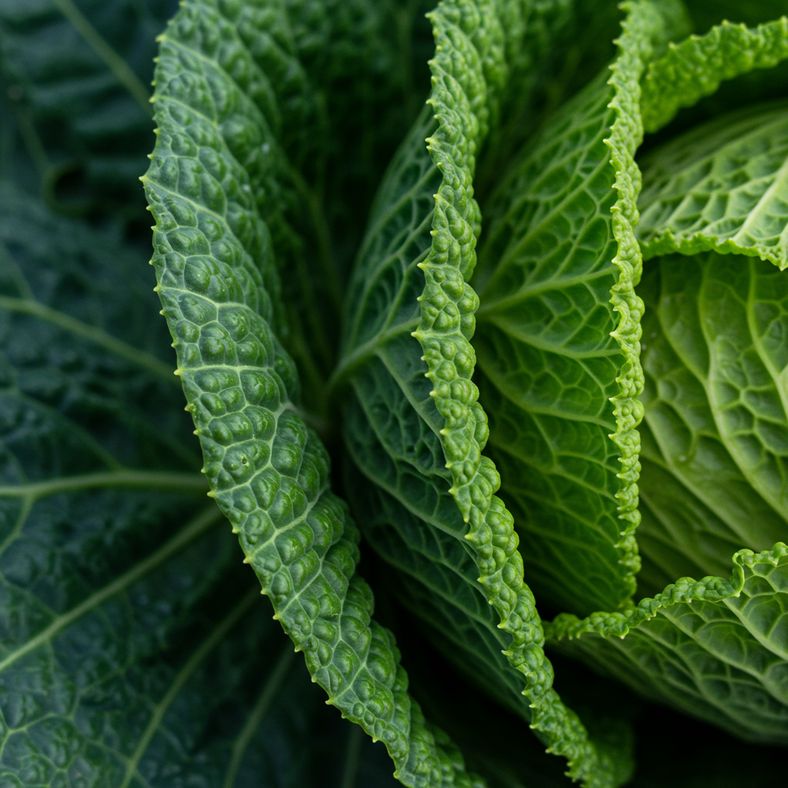
Winter cabbages are distinctly different from their summer counterparts, having been bred specifically to withstand harsh UK winter conditions. These hardy varieties typically require a longer growing season—around 20-26 weeks from sowing to harvest—but reward patient gardeners with robust, flavourful heads that can often remain in the ground for months once mature.
The key characteristics that make winter cabbages so resilient include thicker, waxy leaves that resist frost damage, slower growth rates that allow them to gradually acclimatise to dropping temperatures, and compact, dense head formation that protects the inner leaves from cold penetration.
There are two main categories of winter cabbages to consider for July planting:
- Traditional Winter Cabbages: Including smooth-leaved varieties like January King and Celtic, these form large, dense heads and can withstand temperatures down to -10°C
- Savoy Cabbages: Distinguished by their attractive crinkled leaves, these are often the hardiest of all cabbage types and maintain excellent texture even after frost
Both types share the advantage of improving in flavour after exposure to frost, as cold temperatures convert starches to sugars, resulting in sweeter, more tender leaves.
Top Winter Cabbage Varieties for UK Gardens
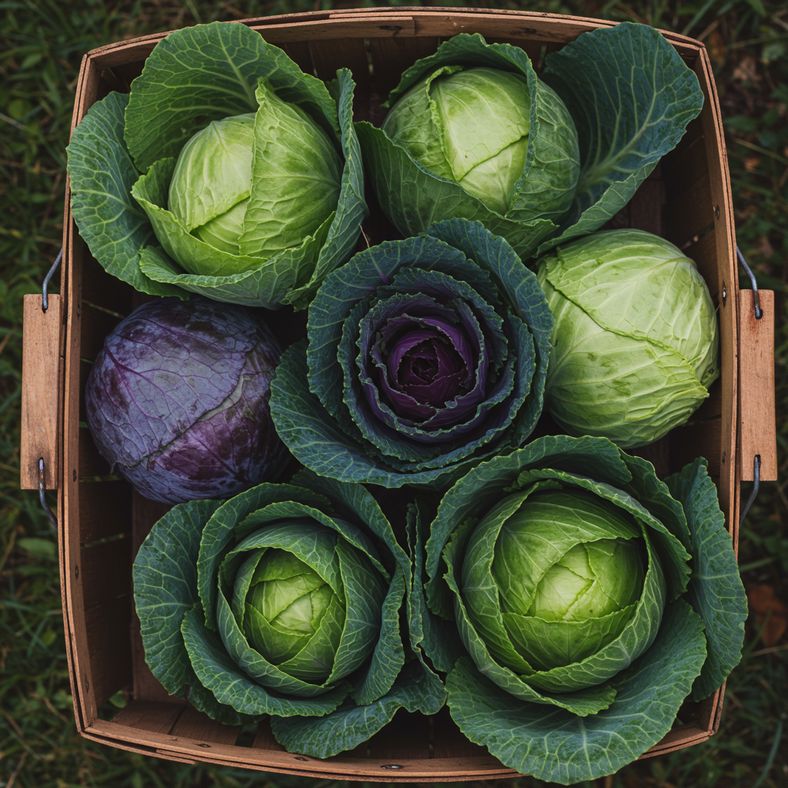
Selecting the right varieties is crucial for winter success. Here are the most reliable winter cabbage varieties proven to excel in UK conditions:
Savoy Varieties
'Best of All' Savoy: Considered the ultimate winter hardy variety, this exceptional cabbage can withstand the harshest UK winters. It produces round, flattened heads with beautiful blue-green crinkled leaves and solid hearts weighing 2-3kg. The texture remains excellent even after severe frost.
'Tundra' F1: An impressive modern hybrid with superb resistance to extreme winter weather. This variety has been specifically bred to cope with anything the British winter can deliver, producing compact, uniform heads with excellent standing ability.
'Winter King': Features dark, finely crumpled leaves on uniform heads with short stems. This variety can successfully overwinter in mild areas and produces excellent quality heads of 2-3kg.
Traditional Winter Varieties
'January King': An English heritage variety that's become the gold standard for winter cabbages. This semi-savoy type produces flat, solid heads weighing 3-5kg with attractive purple markings on the outer leaves. It's remarkably frost-resistant and stores exceptionally well.
'Celtic' F1: A reliable modern hybrid that combines the hardiness of traditional varieties with improved uniformity. It produces large, dense heads and shows excellent resistance to common brassica diseases.
'Advantage': An RHS Award of Garden Merit winner, this versatile variety forms pointed heads and offers exceptional winter hardiness with good standing ability once mature.
For gardeners new to winter vegetables, I'd particularly recommend starting with 'January King' or 'Best of All' Savoy, as these varieties are virtually foolproof and incredibly forgiving of less-than-perfect growing conditions.
Perfect Timing: July Sowing for Winter Harvest
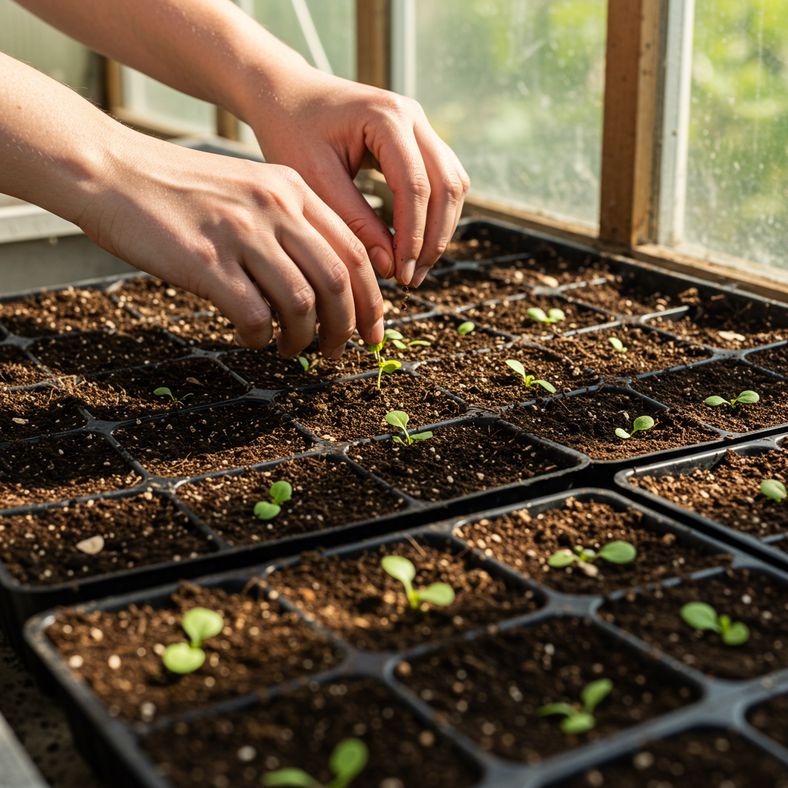
July is the optimal month for sowing winter cabbage varieties in the UK, as it provides the perfect balance of warm germination conditions and sufficient growing time before winter arrives. The exact timing within July can vary slightly depending on your location and the specific variety chosen.
Early July (1st-15th): Ideal for slower-maturing varieties like 'January King' and large Savoy types. These varieties need the full growing season to develop their characteristic large heads and maximum cold resistance.
Mid to Late July (15th-31st): Perfect for faster-maturing winter varieties and compact types. This timing also works well if you're succession planting for extended harvests.
The key advantage of July sowing is that seedlings will establish quickly in the warm soil, developing strong root systems before the cooler autumn weather arrives. This robust foundation is essential for winter survival, as well-established plants are far more resistant to frost damage and winter stress.
Temperature considerations are crucial during this period. Seeds germinate best when soil temperatures are between 15-20°C, which is typically achieved in July. However, avoid sowing during extreme heatwaves, as brassica seeds can enter dormancy if temperatures exceed 25°C.
For best results, aim to have your winter cabbages planted out in their final positions by late July to early August. This gives them 4-5 months of growing time before the harshest winter weather arrives, ensuring they reach sufficient size and maturity to withstand freezing temperatures.
Soil Preparation and Planting Techniques
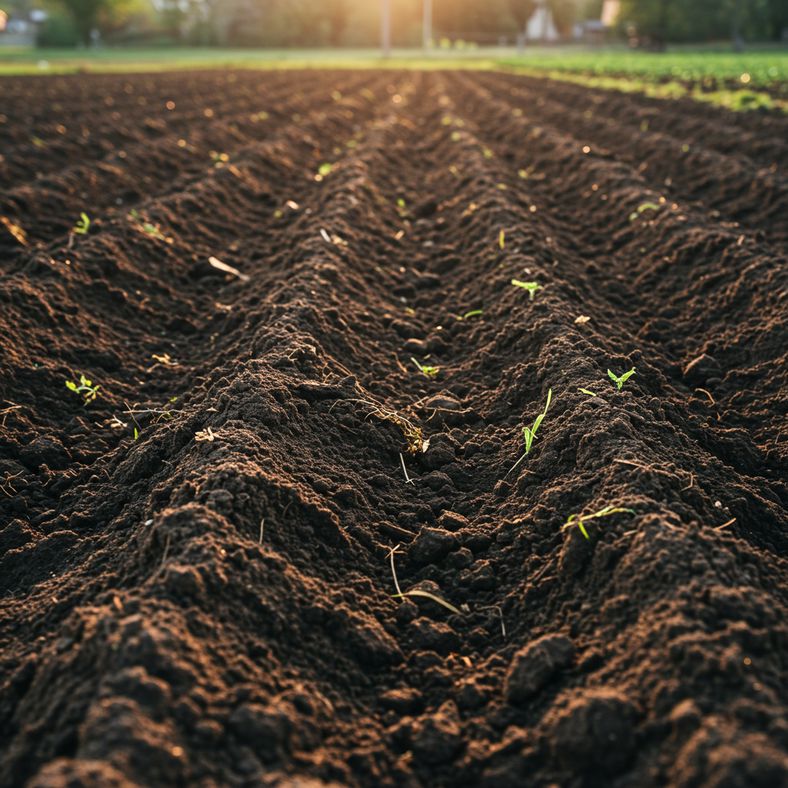
Winter cabbages have specific soil requirements that differ from summer vegetables. Proper soil preparation in July sets the foundation for a successful winter harvest.
Soil Requirements
Winter cabbages thrive in firm, fertile soil with a pH between 6.5-7.0. The slightly alkaline conditions help prevent club root disease, a common problem in brassica crops. If your soil is acidic, apply garden lime in early July, at least two weeks before sowing.
The soil should be deeply dug and enriched with well-rotted organic matter. Add two buckets of garden compost or well-rotted manure per square metre, ideally incorporated the previous autumn. This organic matter improves soil structure, provides slow-release nutrients, and helps retain moisture during dry spells.
Crucially, winter cabbages prefer firm soil. If you've recently added organic matter, ensure the ground is well-consolidated by walking across it or using the back of a rake. Loose, fluffy soil can lead to poor root establishment and increased vulnerability to frost heave.
Sowing Techniques
Module Sowing (Recommended): Sow 2-3 seeds per module in peat-free seed compost, 1.5cm deep. Keep at 15-20°C and thin to the strongest seedling once germinated. This method reduces root disturbance and gives better establishment rates.
Seedbed Sowing: Prepare a fine seedbed and sow seeds thinly in rows 15cm apart, 1.5cm deep. This traditional method works well but requires more careful transplanting later.
Regardless of sowing method, protect young seedlings from slugs and cabbage root fly. Use fine mesh covers and consider placing brassica collars around transplanted seedlings—simple circles of cardboard or carpet around the stem base that prevent egg-laying.
For container growing, use large pots (minimum 30cm diameter) filled with quality multipurpose compost. This method is excellent if you have club root problems in your soil or limited garden space.
Transplanting and Spacing Guidelines
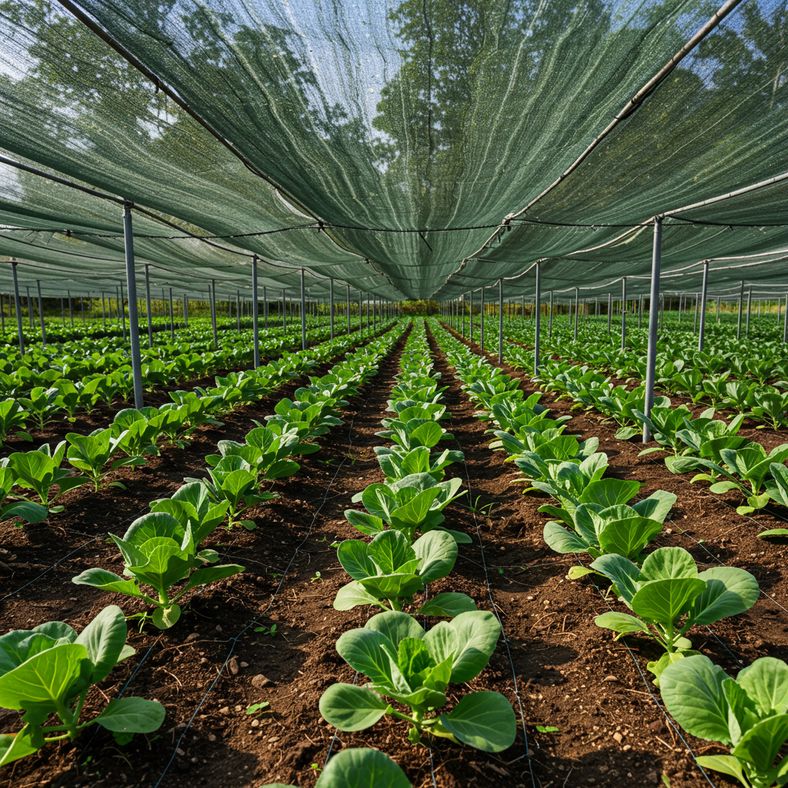
Successful transplanting is crucial for winter cabbage establishment. Young plants are ready to move to their final positions when they have 5-6 true leaves and are 10-15cm tall, typically 4-6 weeks after sowing.
Pre-Transplant Preparation
Before transplanting, harden off indoor-raised plants gradually over 7-10 days. Start by placing them outside for a few hours daily, gradually increasing exposure until they can tolerate full outdoor conditions. This process is essential for preventing transplant shock.
Water plants thoroughly the day before transplanting, ensuring they're well-hydrated but not waterlogged. Choose a cloudy day or transplant in early evening to reduce stress on the plants.
Spacing Requirements
Proper spacing is vital for winter cabbages, as overcrowding leads to poor air circulation and increased disease risk:
- Large varieties (January King, large Savoy): 45-50cm apart in all directions
- Medium varieties (Celtic, Advantage): 40-45cm spacing
- Compact varieties (Winter King, small Savoy): 35-40cm apart
Plant deeply, with the lowest leaves at soil level, and firm the soil well around each plant. This deep planting encourages strong root development and helps anchor plants against winter winds.
Post-Transplant Care
Water immediately after transplanting and continue daily watering until plants show signs of new growth. Install protective measures such as:
- Fine mesh netting to prevent cabbage white butterfly damage
- Brassica collars to deter cabbage root fly
- Slug barriers using copper tape or organic pellets
Consider companion planting with aromatic herbs like thyme or rosemary, which can help deter pests naturally while making efficient use of garden space.
Essential Care Through Autumn and Winter
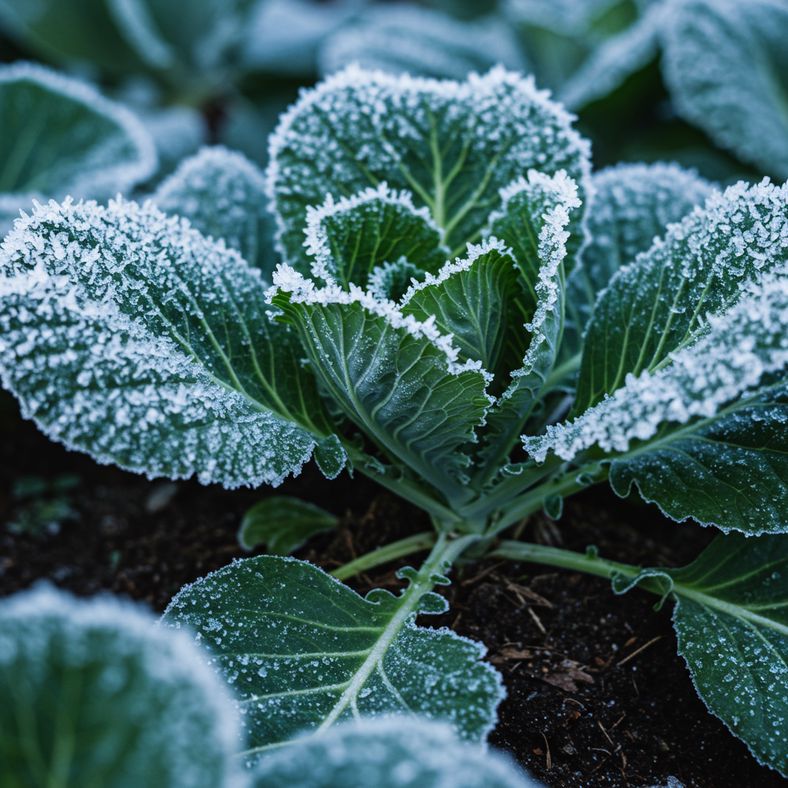
Once established, winter cabbages require specific care routines that differ significantly from summer vegetable maintenance. The key is providing steady support while allowing plants to naturally acclimatise to dropping temperatures.
Watering Strategy
Consistent moisture is crucial during the establishment phase (August-September), providing 2-3cm of water weekly during dry spells. As temperatures drop in autumn, reduce watering frequency but ensure soil doesn't become completely dry. Winter cabbages are surprisingly drought-tolerant once established, but sudden changes in moisture can cause splitting.
Avoid overhead watering in winter months, as wet leaves are more susceptible to fungal diseases. Instead, water at soil level using a watering can or soaker hose system.
Feeding Programme
Winter cabbages benefit from a balanced feeding approach:
- August: Apply a nitrogen-rich liquid feed every 2-3 weeks to encourage strong leaf development
- September: Switch to a potassium-rich feed to improve cold resistance and head formation
- October onwards: Cease feeding to allow plants to naturally harden for winter
A thick mulch of well-rotted compost applied in September helps retain soil moisture and provides slow-release nutrients throughout winter.
Winter Protection and Maintenance
As winter approaches, implement these protective measures:
Earth-up stems: In November, draw soil around the base of plants to improve stability and protect roots from frost. This technique, borrowed from traditional farming, significantly improves winter survival rates.
Remove yellowing leaves: Regularly remove any yellowing or damaged outer leaves to prevent disease and improve air circulation. This maintenance is particularly important during damp winter conditions.
Check plant stability: After severe weather, check that plants haven't been loosened by frost heave and re-firm if necessary.
Pest monitoring: Even in winter, keep an eye out for pigeons, which can cause significant damage to brassicas when other food sources are scarce. Maintain netting throughout the growing season.
Harvesting Your Winter Bounty

The reward for your July planting efforts comes during the coldest months, when fresh vegetables are scarce and expensive in shops. Winter cabbages offer the unique advantage of improving in flavour after frost exposure, making them a true cold-season delicacy.
Harvest Timing
Winter varieties typically reach maturity from November onwards, but the beauty of these hardy vegetables is their exceptional standing ability. Unlike summer cabbages that quickly bolt or deteriorate, winter varieties can remain in perfect condition for months once mature.
Early varieties (November-December): Fast-maturing types like 'Celtic' and some Savoy varieties
Mid-winter harvest (January-February): Traditional varieties like 'January King' reach peak quality
Late winter (February-March): The hardiest Savoy varieties continue providing fresh harvests
The key indicator of readiness is a firm, solid head that feels heavy for its size. Gently squeeze the cabbage—it should feel dense and solid rather than loose or soft.
Harvesting Technique
Use a sharp knife to cut through the stem just above ground level, leaving the root system intact. This traditional method allows you to potentially get a second crop of smaller cabbages from the remaining stump—simply score a shallow cross in the cut surface and protect from frost.
Harvest in dry conditions when possible, as wet cabbages are more prone to storage problems. Remove any damaged outer leaves but leave the protective wrapper leaves in place if storing.
Storage and Preservation
Fresh winter cabbages can be stored for several months in the right conditions:
- Root cellar storage: Hang whole plants with roots attached in a cool, humid environment (0-4°C)
- Refrigerator storage: Wrapped heads keep for 4-6 weeks in the crisper drawer
- Traditional preservation: Make sauerkraut or kimchi for long-term storage and added nutritional benefits
The superior storage ability of winter varieties means you can harvest selectively, taking cabbages as needed while leaving others to continue growing and improving in the garden.
Common Challenges and Solutions
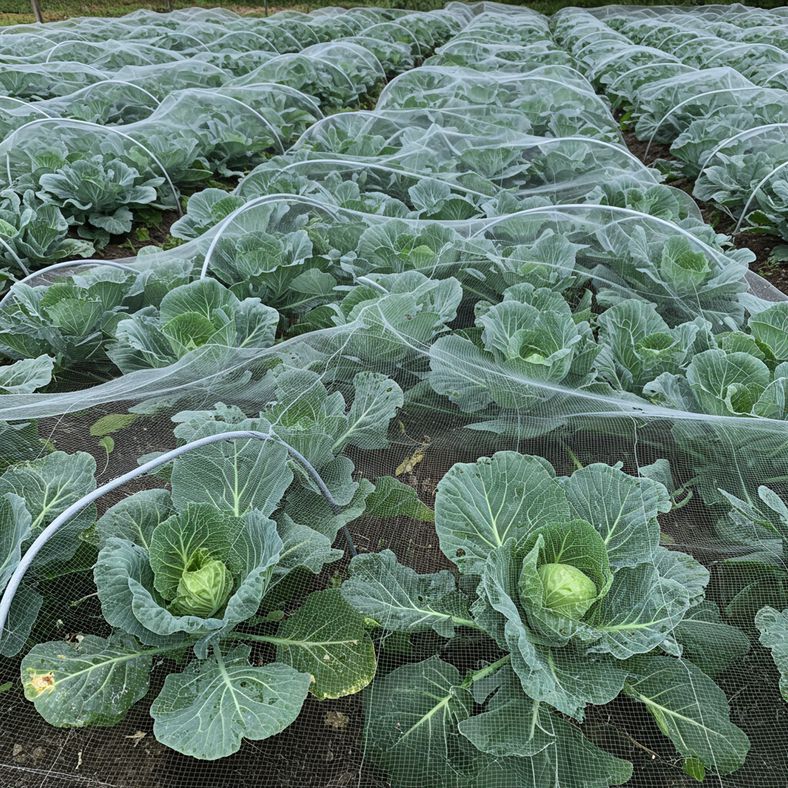
While winter cabbages are generally robust and trouble-free, understanding potential challenges helps ensure consistent success. Most problems can be prevented with proper planning and proactive care.
Pest Management
Cabbage White Butterflies: These persistent pests remain active well into autumn. Maintain fine mesh netting throughout the growing season and inspect plants weekly for egg clusters on leaf undersides. Remove eggs by hand or use Bacillus thuringiensis (Bt) spray for organic control.
Pigeons: Increasingly problematic in winter when natural food sources are scarce. Strong netting supported well above plants is essential. Alternative deterrents include reflective tape and companion planting with thorny shrubs.
Slugs and Snails: Particularly damaging to young transplants. Use copper barriers, organic pellets, or beer traps. Encourage natural predators like ground beetles by providing log piles and undisturbed areas nearby.
Disease Prevention
Club Root: This serious soil-borne disease can devastate brassica crops. Prevention strategies include:
- Maintaining soil pH above 6.5
- Improving drainage in heavy soils
- Rotating crops strictly—avoid growing brassicas in the same area for 4-5 years
- Choosing resistant varieties like 'Kilaxy' F1
Downy Mildew: Common in damp conditions. Ensure adequate spacing for air circulation and avoid overhead watering. Remove affected leaves promptly.
Environmental Challenges
Frost Heave: Repeated freeze-thaw cycles can lift plants from soil. Check regularly and re-firm displaced plants. The earthing-up technique mentioned earlier greatly reduces this problem.
Splitting: Usually caused by irregular watering or rapid temperature changes. Maintain consistent soil moisture and consider varieties with splitting resistance.
Bolting: Premature flowering typically results from temperature stress during establishment. Ensure adequate hardening-off and avoid planting during extreme heat.
For comprehensive pest and disease identification, consider investing in a good reference guide or utilizing the excellent resources provided by the RHS, which offers detailed photographs and treatment recommendations for all common brassica problems.
Planning Your Winter Vegetable Garden
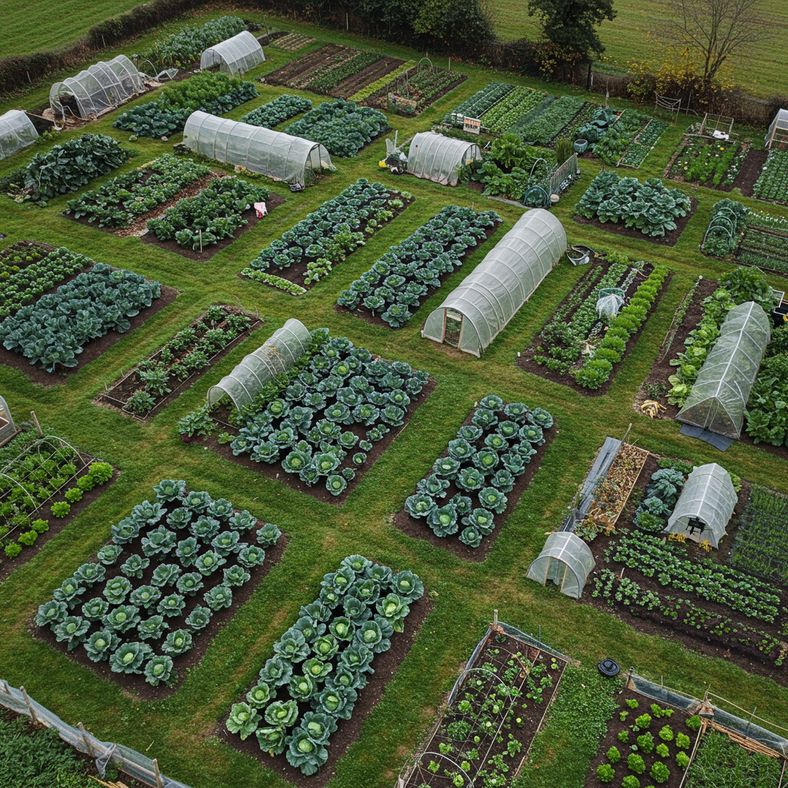
Successfully growing winter cabbages is just the beginning of creating a productive cold-season garden. Strategic planning ensures continuous harvests and makes the most efficient use of your growing space throughout the winter months.
Succession Planting Strategy
Rather than sowing all your winter cabbages at once, consider a succession planting approach:
- Early July: Sow slow-maturing varieties like large Savoy types for January-March harvest
- Mid-July: Plant medium-term varieties such as 'January King' for December-February harvest
- Late July: Quick-maturing compact varieties for November-January harvest
This staggered approach provides fresh cabbages throughout winter while preventing overwhelming gluts that are difficult to use or store.
Companion Planting for Winter
Winter cabbages work well in mixed plantings with other hardy vegetables:
Root Vegetables: Carrots, turnips, and swedes planted nearby make efficient use of space between cabbage rows
Leafy Greens: Winter spinach and perpetual beet provide quick harvests while cabbages mature
Herbs: Hardy herbs like rosemary and thyme help deter pests while providing culinary benefits
Crop Rotation Considerations
Winter cabbages must be integrated into your overall crop rotation plan. Follow these guidelines:
- Never grow brassicas in the same location two years running
- Ideally, wait 3-4 years before returning brassicas to the same plot
- Follow cabbages with legumes (beans, peas) to restore soil nitrogen
- Use the rotation to break pest and disease cycles naturally
Tools and Equipment for Success
Having the right tools makes winter cabbage growing much more manageable:
Essential Tools:
- Quality secateurs for clean harvesting and maintenance
- Fine mesh netting (6mm holes) for complete pest protection
- Bamboo canes or plastic hoops for supporting protective covers
- Watering can with fine rose for gentle watering
Seasonal Equipment:
- Cold frames for early sowings and protection
- Fleece for additional frost protection during extreme weather
- pH testing kit for monitoring soil conditions
By planning comprehensively and investing in quality tools, you'll create a sustainable winter growing system that provides fresh vegetables year after year.
Disclaimer: This article contains Amazon affiliate links. We may earn a small commission from qualifying purchases at no additional cost to you.